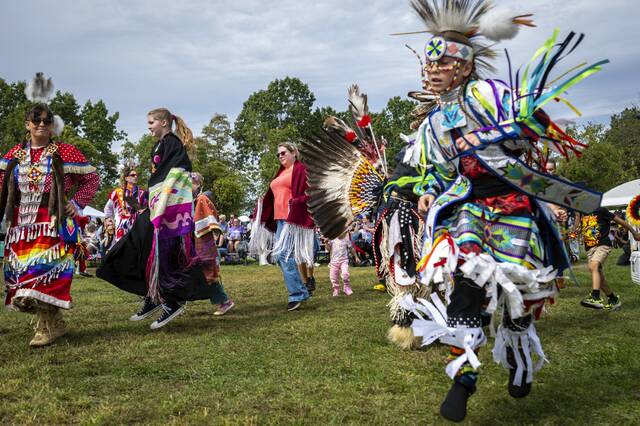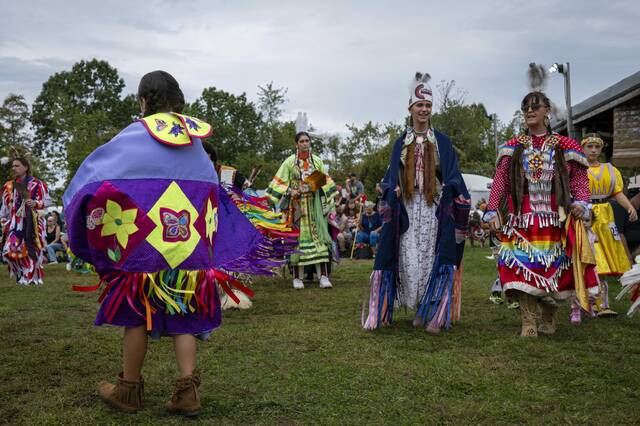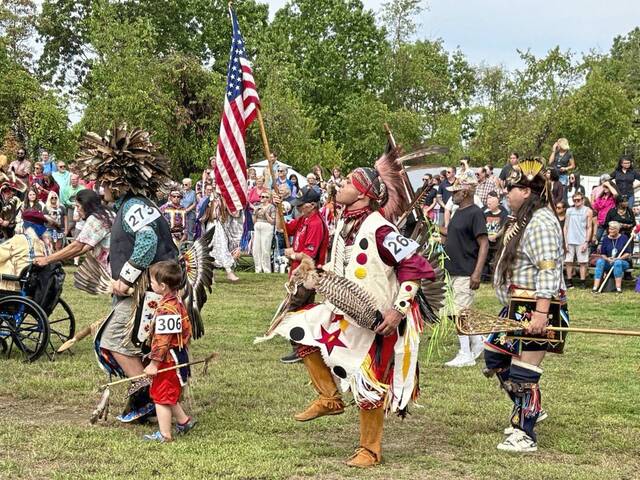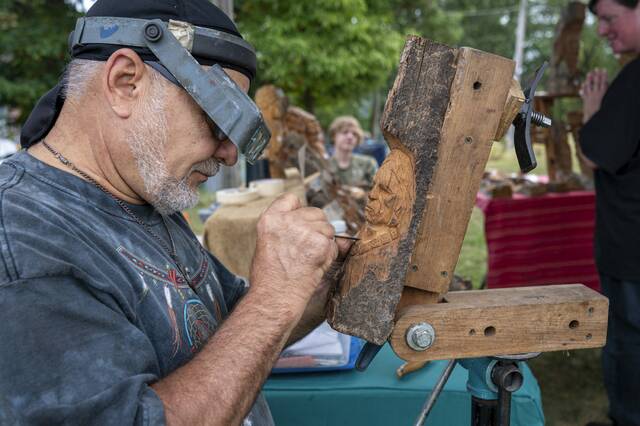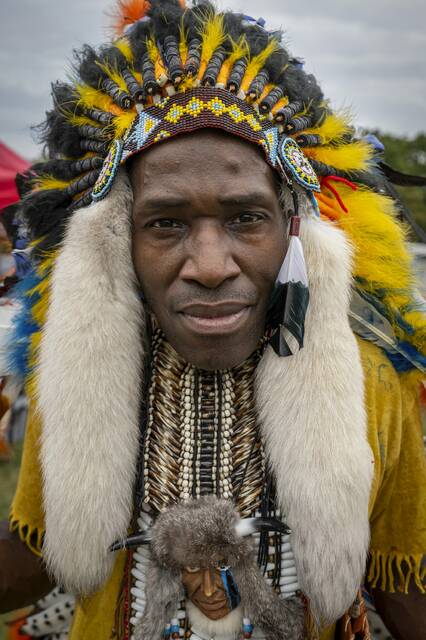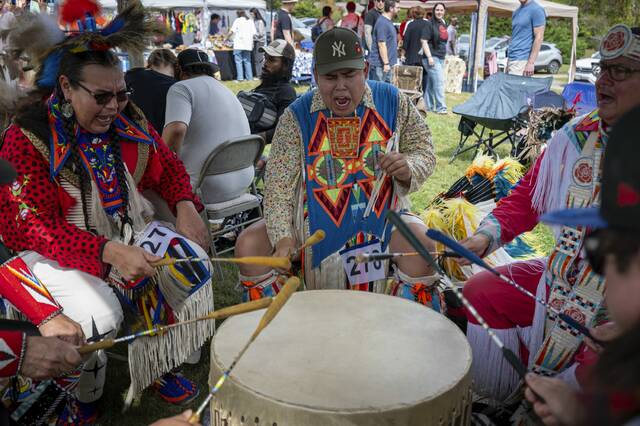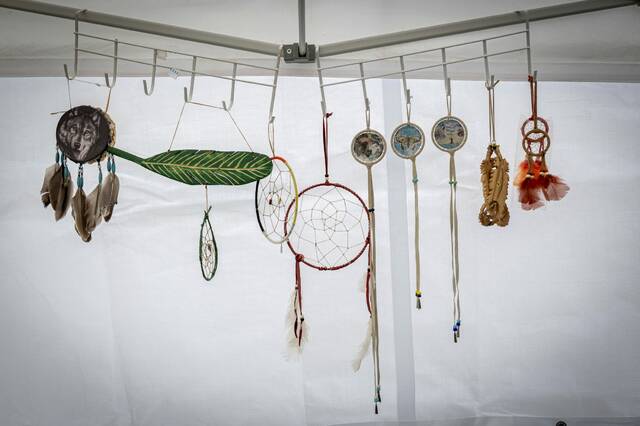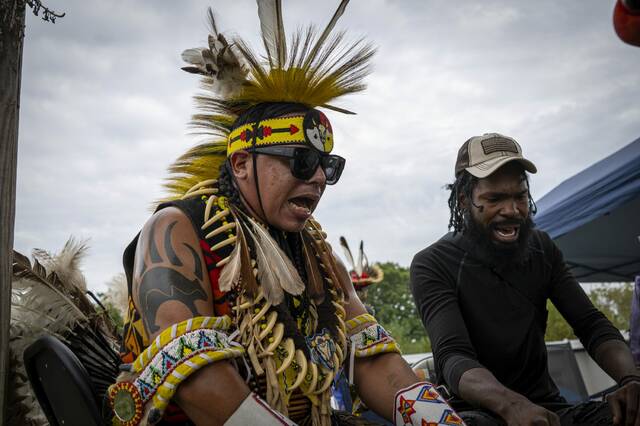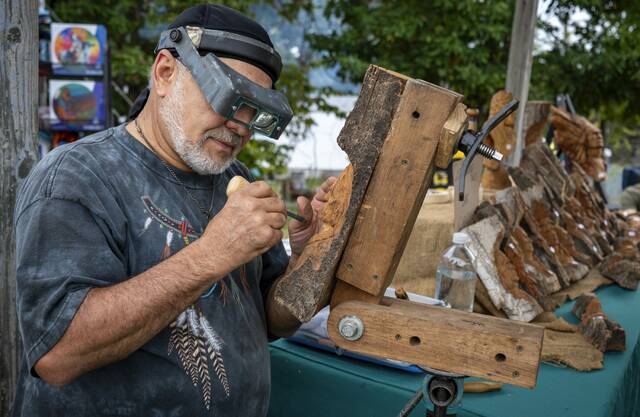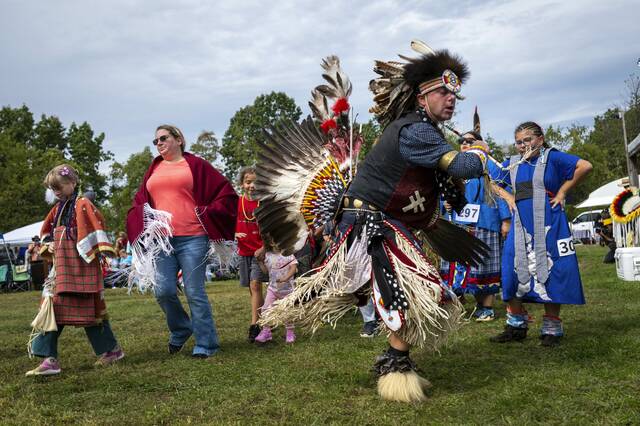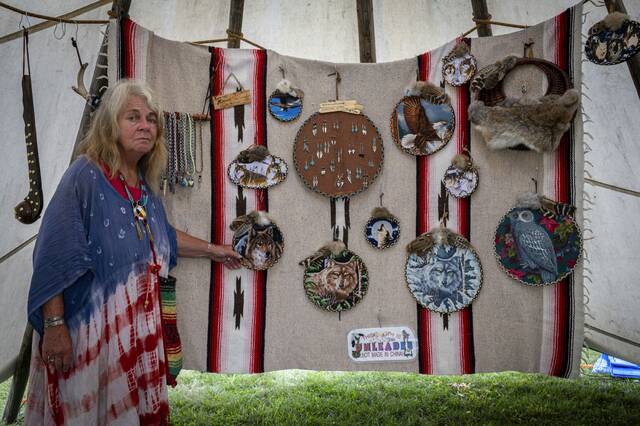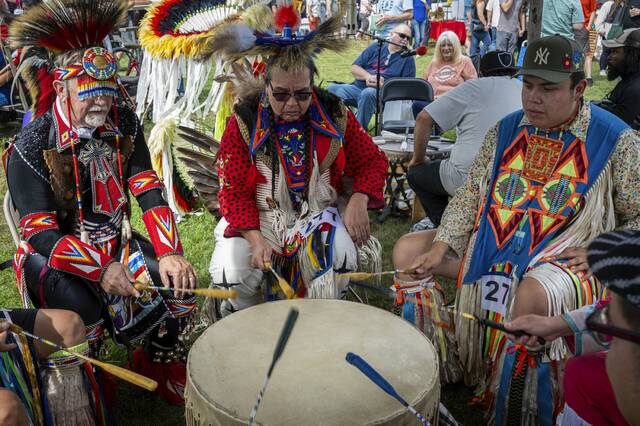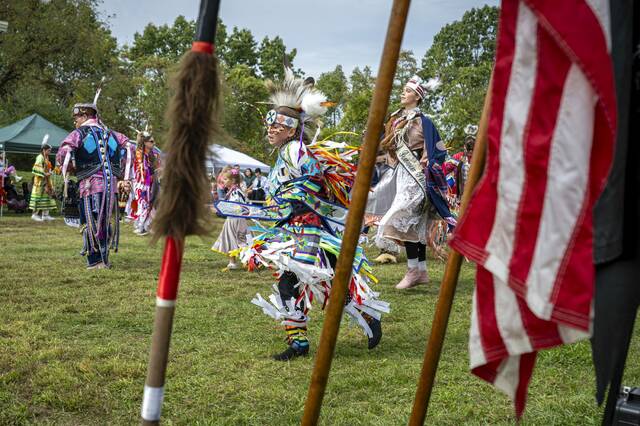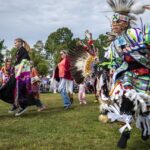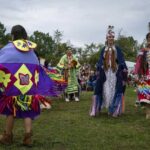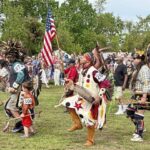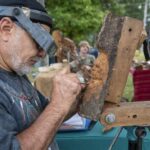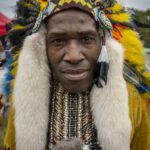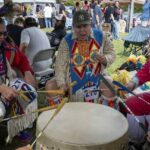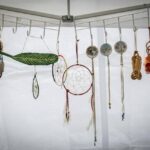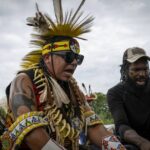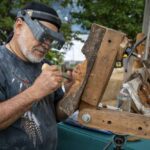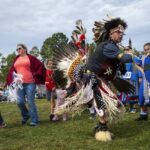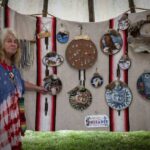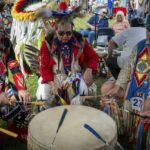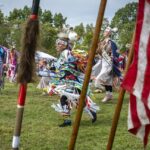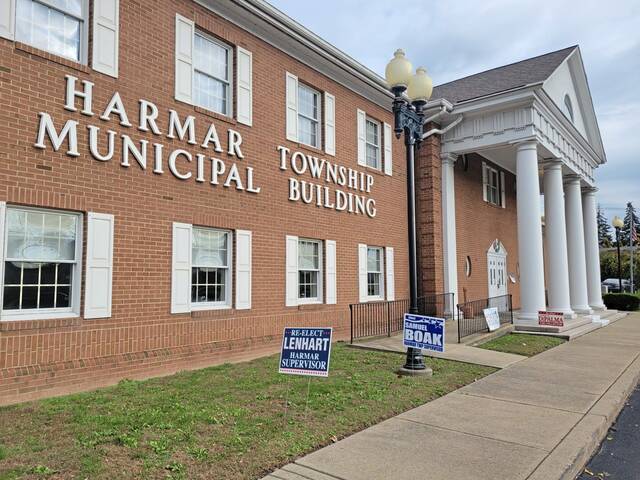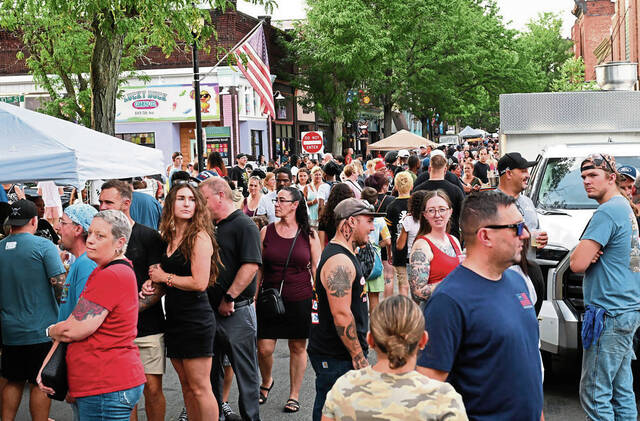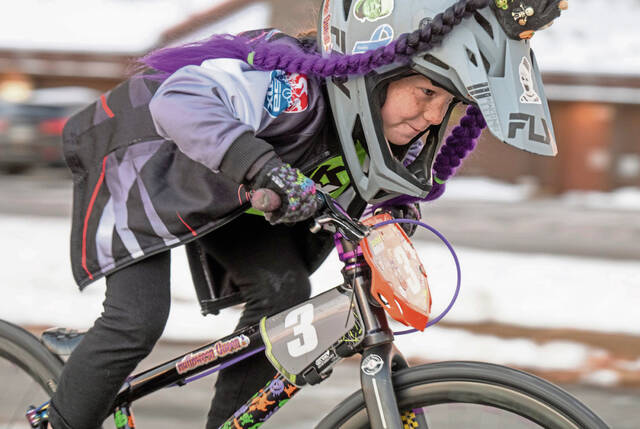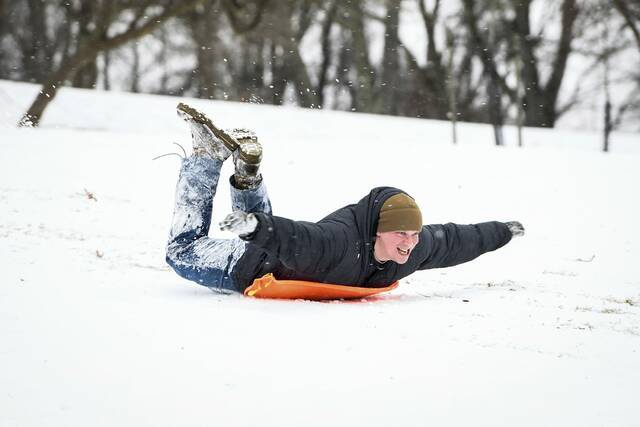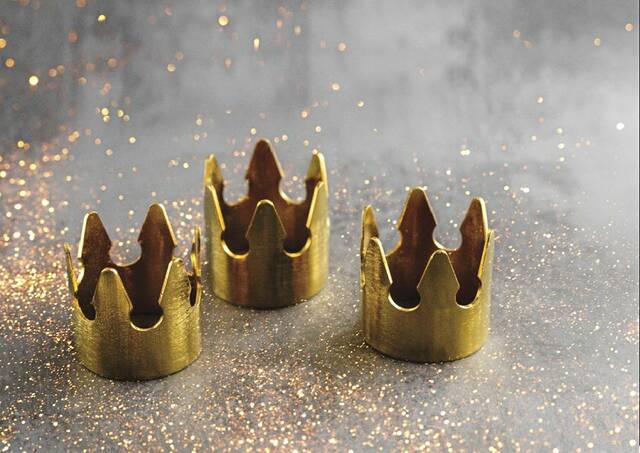Vic Alvin stood in full Native American regalia, waiting to perform for a crowd of thousands at the 46th annual Pow Wow at the Council of Three Rivers American Indian Center in Indiana Township.
Alvin, 35, has been dancing his whole life. This year was more special because his oldest son, Anthony, 14, was joining him on the grass stage at Saturday’s event.
“If we don’t teach the next generation the way of our culture, it gets lost,” said Alvin, a Schuylkill County resident. “It’s always been that way: sharing through word of mouth to stay true to our roots and grow stronger than ever.”
Founded in 1969 on an abandoned U.S. Army base in a remote pocket of the township, the center was incorporated in 1972 as a nonprofit.
It operates Head Start programs across the city and a food bank, open to Native and non-Native people.
In addition, they organize the Pow Wow every year as a way for the public to “understand and learn what they’re looking at,” said founder and executive director, Russell Simms.
“This is culture-based education,” said Simms, a Seminole/Upper Cumberland/Cherokee affiliate.
With more than 500 tribes in the U.S., attendees learn about food, music and attire from an array of groups who travel to drum, dance and sell wares.
“In the early 1970s, the urban Indigenous in Pittsburgh had nothing to reinforce who we are,” Simms said. “We had to come together and organize this product to maintain a sense of culture.”
At the property off Charles Street, vendors set up booths selling bison hides, fox boas, geodes, wood carvings, dreamcatchers and turquoise jewelry.
Plum native Kelley Wood has a business selling puzzles and luggage tags with art drawn by Native Americans. She travels to events as locally as Oakmont and as far as Cape Cod, learning something new each time.
“We didn’t learn too much in school about how Native Americans were treated,” Wood said. “I think it’s important to talk to people and hear first-hand about their cultures.”
Throughout the day, people filled up the wooden bleachers around the dance circle to take in feathered headdresses, raucous drumming and intricate dances. The crowd is invited to join, prior to the competitive rounds.
Piscataway Nation Chief Mark Tayac said the Pow Wow is an opportunity to witness the beauty of Native life.
“It’s not just people beating on the drum. When you hear that, it represents the heartbeat of life,” said Tayac, the 29th generation of hereditary chiefs of the Piscataway People in Maryland.
“People tend to romanticize Native American culture like a John Wayne Hollywood movie. Here, you witness old traditional teachings that keep evolving.”
For performer Grey Doster, the Southern Cloth Traditional Dance is a chance to embrace her Potawatomi tribe ancestry.
The University of Pittsburgh student learned the moves during a visit to her reservation in Oklahoma three years ago.
“My great-grandmother is where I get my affiliation,” Doster said. “When she moved to Pittsburgh, she was made not to celebrate her culture. I feel it’s important to reconnect with my history and do all the things she couldn’t do.”


